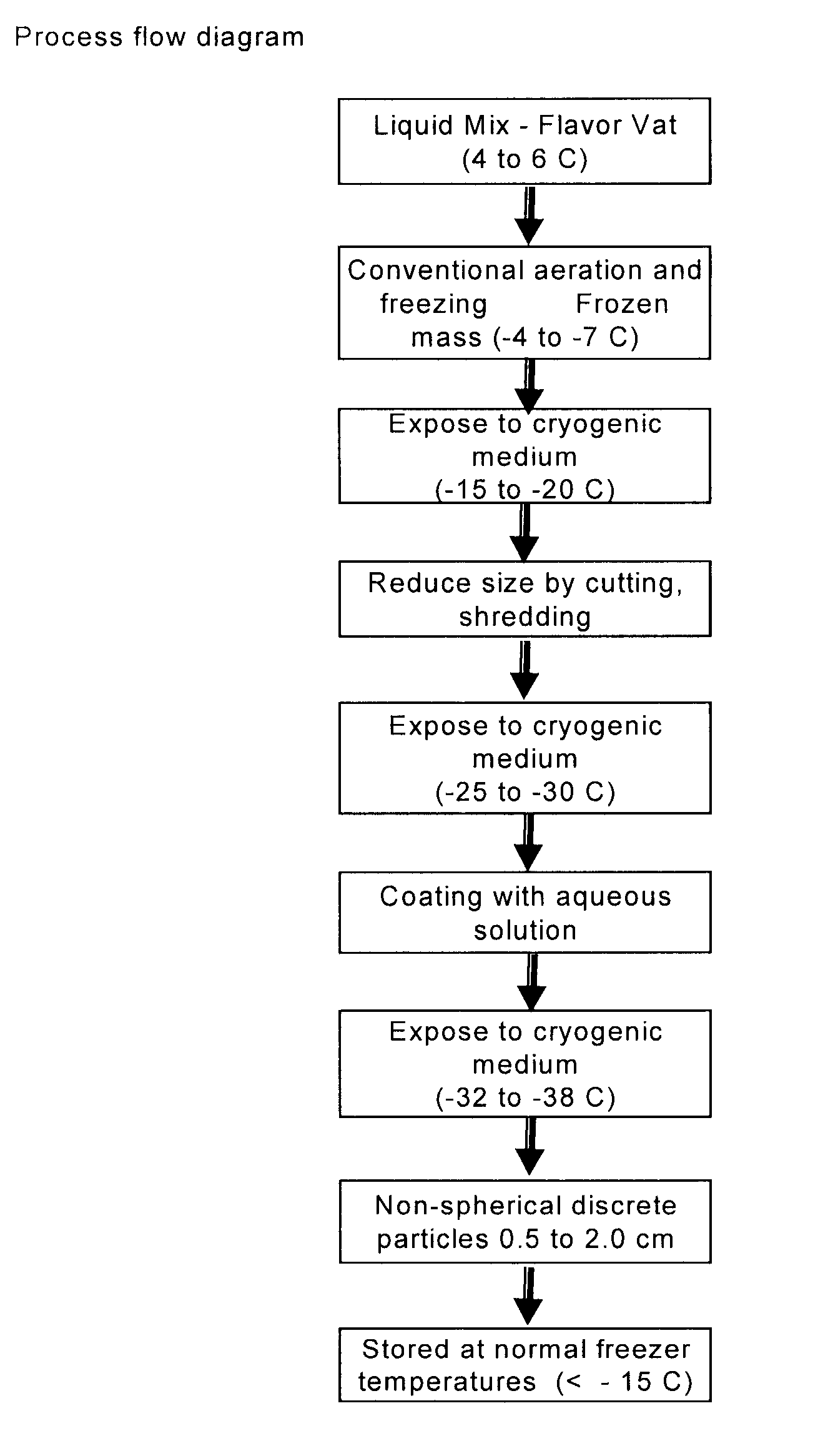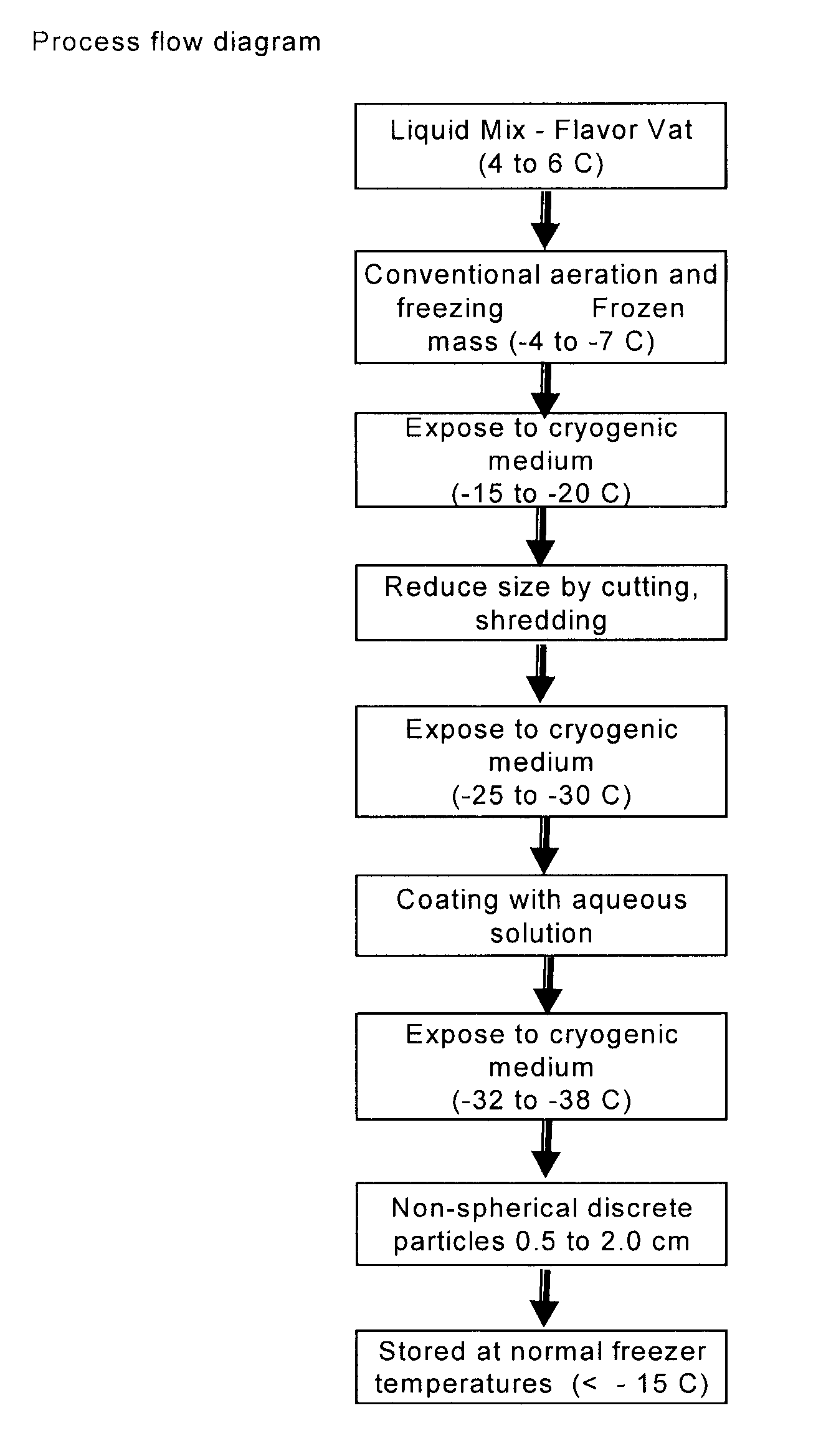Particles of aerated ice confection products for frozen ice drinks
a technology frozen drinks, which is applied in the field of aerated ice confection products for frozen ice drinks, can solve the problems of not being satisfactory to date, requiring further attention, and generally being conducted in fast food or restaurant establishments, and achieves the effect of simple, rapid and convenient manner
- Summary
- Abstract
- Description
- Claims
- Application Information
AI Technical Summary
Benefits of technology
Problems solved by technology
Method used
Image
Examples
example 1
[0049]A conventional ice cream mix was manufactured using standard ingredients including milk, cream, sugars, stabilizers and emulsifiers as show below, then pasteurized and homogenized and stored in a flavor vat at 4° C. (40° F.). Mix making was followed by conventional freezing of mix into ice cream at a specified overrun of 50%. The drawing temperature of the frozen ice cream from the freezer ranged from −5° C. to −7° C. Next, the ice cream was formed into the shape of strands of approximately 1.5 cm diameter. It was further exposed to a cryogenic medium for rapid hardening at −15° C. to −20° C. The hardened mass was reduced in size by cutting the strands with a knife blade to aerated ice confection particles having the following specified weight and dimensions: approx. 0.5 to 3.0 grams wt, and 1.5 to 5 cm3 with a principal diameter of about 1 to 2 cm, such that the particles have the approximate shape of the letter D.
[0050]After attaining the desired size, the aerated ice confec...
PUM
 Login to View More
Login to View More Abstract
Description
Claims
Application Information
 Login to View More
Login to View More - R&D
- Intellectual Property
- Life Sciences
- Materials
- Tech Scout
- Unparalleled Data Quality
- Higher Quality Content
- 60% Fewer Hallucinations
Browse by: Latest US Patents, China's latest patents, Technical Efficacy Thesaurus, Application Domain, Technology Topic, Popular Technical Reports.
© 2025 PatSnap. All rights reserved.Legal|Privacy policy|Modern Slavery Act Transparency Statement|Sitemap|About US| Contact US: help@patsnap.com


